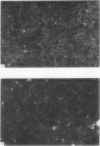Abstract
To investigate the mechanisms underlying the hepatotoxicity induced by methyl dopa, we have examined sera from nine patients with liver damage following the use of the drug for evidence of sensitisation to drug altered liver cell membrane antigens using both immunofluorescence and antibody dependent cell mediated cytotoxicity. Five sera induced significant cytotoxicity to hepatocytes isolated from rabbits pretreated with methyl dopa after exposure to the mixed function oxidase inducer, Arachlor 1254. Sera from 10 patients on methyl dopa but with normal liver function and 32 patients with other drug and viral induced liver damage, gave normal cytotoxicity values. Two of the antibody positive sera gave a specific immunofluorescence pattern at the periphery of human hepatocytes when tested on liver biopsy specimens taken from patients taking methyl dopa. These findings are consistent with the view that immune mechanisms directed against drug associated antigens are involved in severe liver damage from methyl dopa administration and that metabolic activation of the drug is implicated in the generation of drug associated antigen. The need for a combination of immune and metabolic factors may explain the rarity of this condition.
Full text
PDF
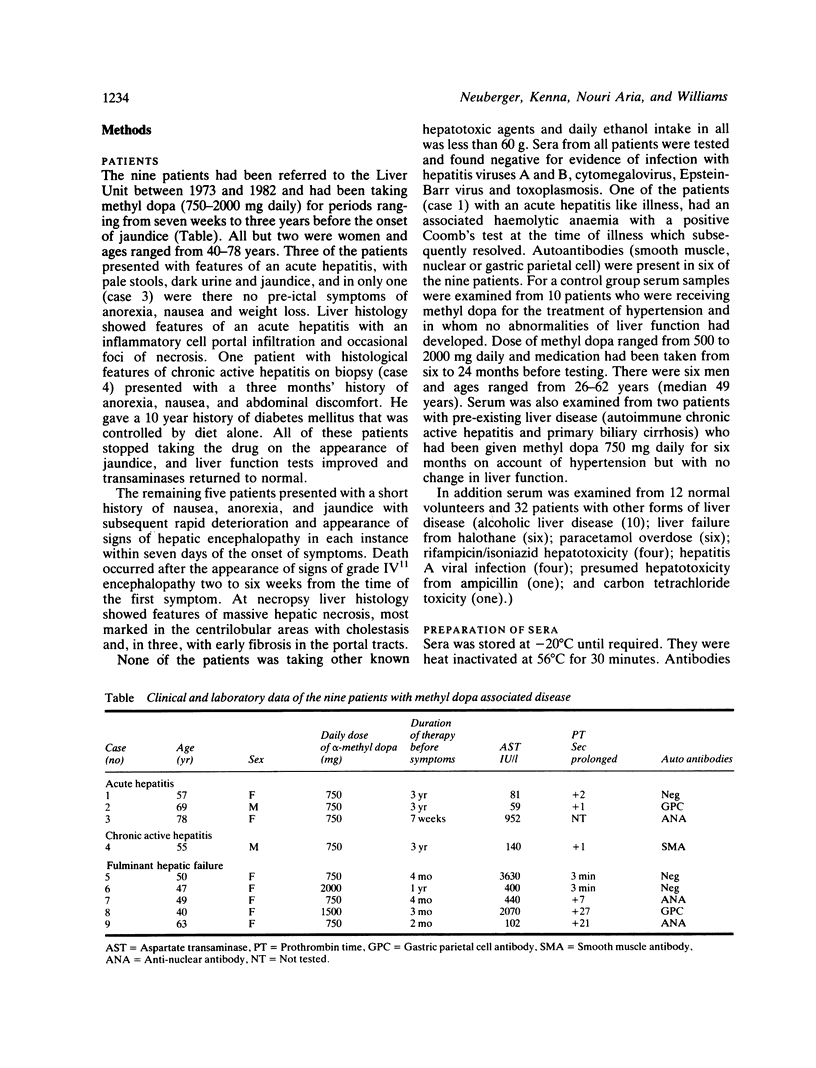
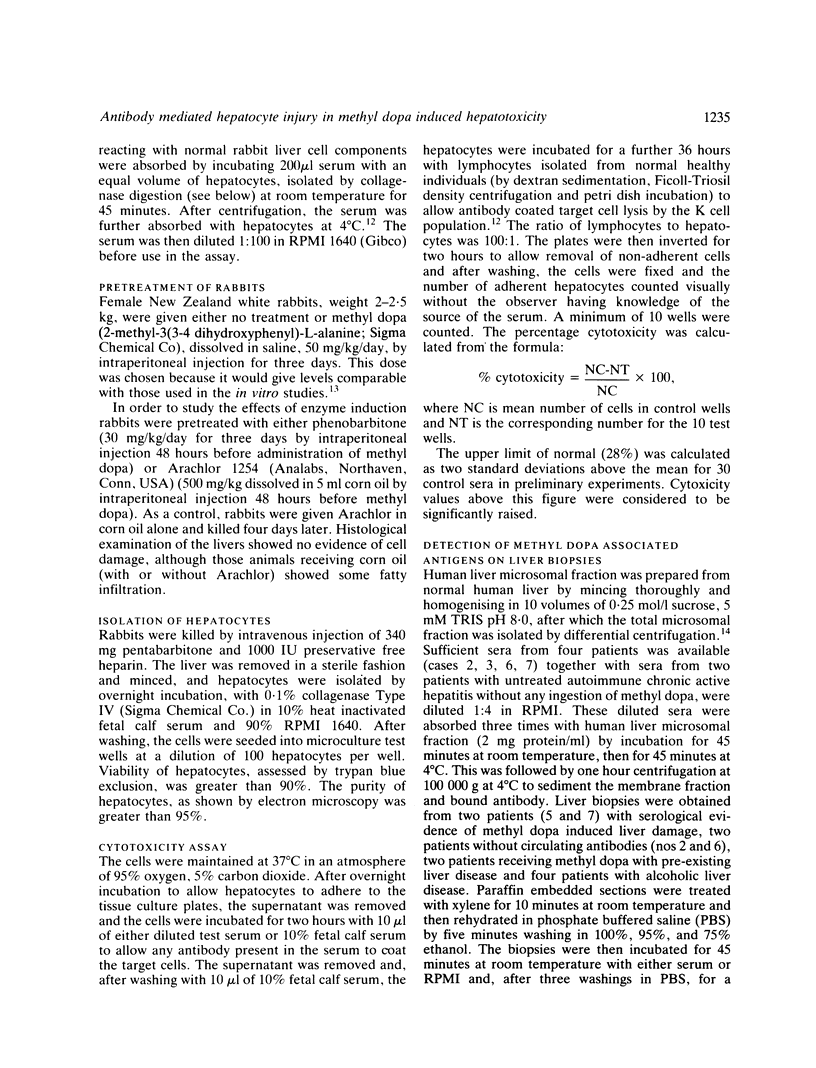
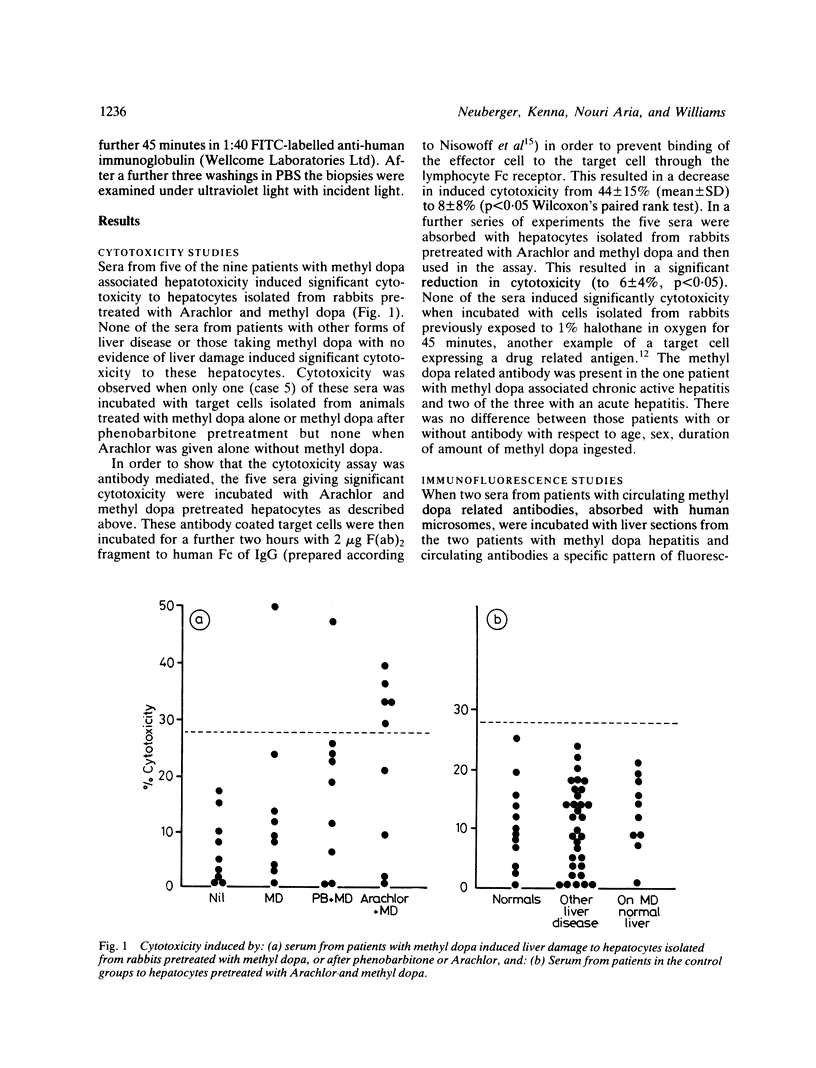
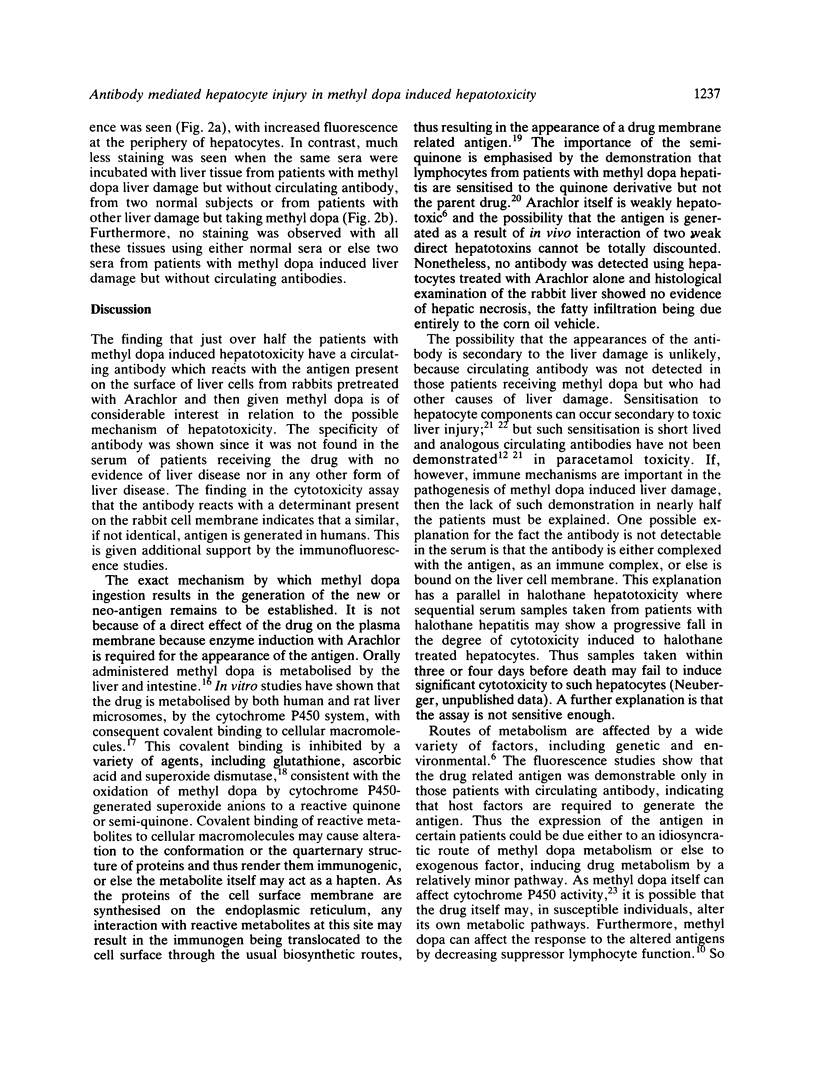
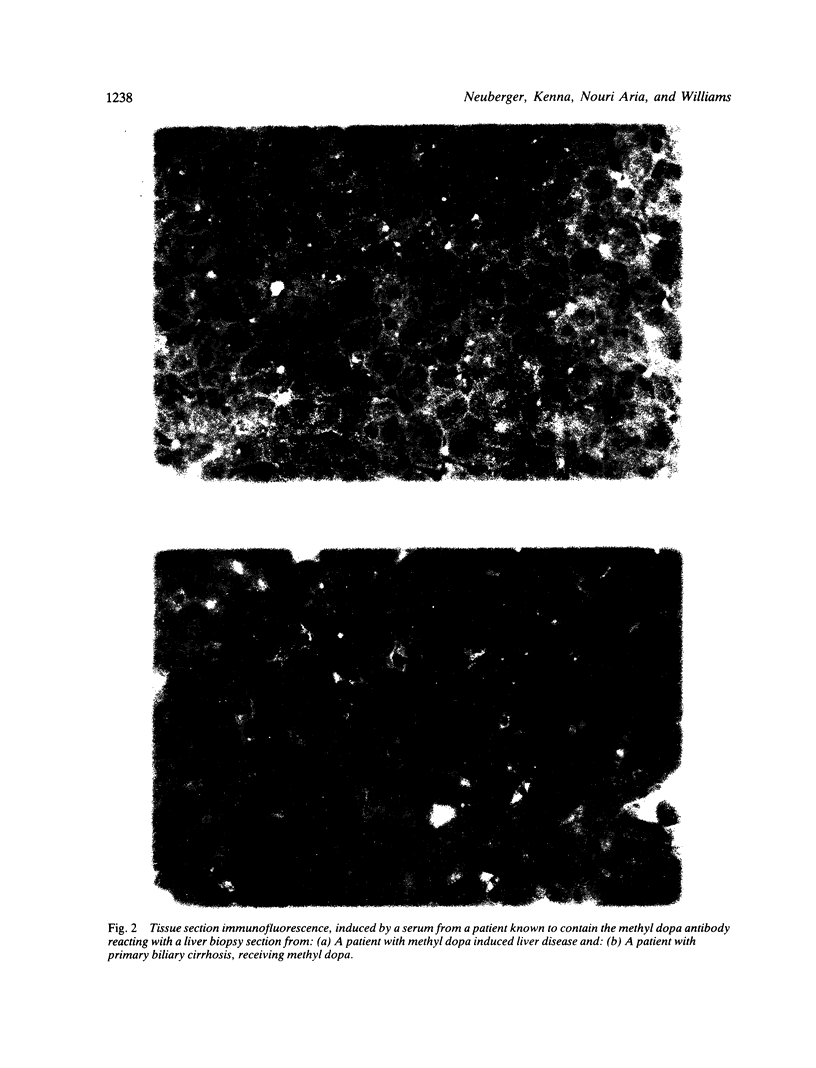

Images in this article
Selected References
These references are in PubMed. This may not be the complete list of references from this article.
- Arranto A. J., Sotaniemi E. A. Morphologic alterations in patients with alpha-methyldopa-induced liver damage after short- and long-term exposure. Scand J Gastroenterol. 1981;16(7):853–863. doi: 10.3109/00365528109181814. [DOI] [PubMed] [Google Scholar]
- Dybing E. Activation of alpha-methyldopa, paracetamol and furosemide by human liver microsomes. Acta Pharmacol Toxicol (Copenh) 1977 Jul;41(1):89–93. doi: 10.1111/j.1600-0773.1977.tb02128.x. [DOI] [PubMed] [Google Scholar]
- Dybing E., Nelson S. D., Mitchell J. R., Sasame H. A., Gillette J. R. Oxidation of alpha-methyldopa and other catechols by cytochrome P-450-generated superoxide anion: possible mechanism of methyldopa hepatitis. Mol Pharmacol. 1976 Nov;12(6):911–920. [PubMed] [Google Scholar]
- Dybing E. Organ and species differences in microsomal activation of methyldopa. Drug Metab Dispos. 1976 Nov-Dec;4(6):513–516. [PubMed] [Google Scholar]
- Kirtland H. H., 3rd, Mohler D. N., Horwitz D. A. Methyldopa inhibition of suppressor-lymphocyte function: a proposed cause of autoimmune hemolytic anemia. N Engl J Med. 1980 Apr 10;302(15):825–832. doi: 10.1056/NEJM198004103021502. [DOI] [PubMed] [Google Scholar]
- LEONARD J. W., GIFFORD R. W., Jr, HUMPHREY D. C. TREATMENT OF HYPERTENSION WITH METHYLDOPA ALONE OR COMBINED WITH DIURETICS AND OR GUANETHIDINE. A REPORT OF 63 CASES. Am Heart J. 1965 May;69:610–618. doi: 10.1016/0002-8703(65)90242-5. [DOI] [PubMed] [Google Scholar]
- Morré D. J., Kartenbeck J., Franke W. W. Membrane flow and intercoversions among endomembranes. Biochim Biophys Acta. 1979 Apr 23;559(1):71–52. doi: 10.1016/0304-4157(79)90008-x. [DOI] [PubMed] [Google Scholar]
- Myhre E., Rugstad H. E., Hansen T. Clinical pharmacokinetics of methyldopa. Clin Pharmacokinet. 1982 May-Jun;7(3):221–233. doi: 10.2165/00003088-198207030-00003. [DOI] [PubMed] [Google Scholar]
- NISONOFF A., WISSLER F. C., LIPMAN L. N., WOERNLEY D. L. Separation of univalent fragments from the bivalent rabbit antibody molecule by reduction of disulfide bonds. Arch Biochem Biophys. 1960 Aug;89:230–244. doi: 10.1016/0003-9861(60)90049-7. [DOI] [PubMed] [Google Scholar]
- Rodman J. S., Deutsch D. J., Gutman S. I. Methyldopa Hepatitis. A report of six cases and review of the literature. Am J Med. 1976 Jun;60(7):941–948. doi: 10.1016/0002-9343(76)90564-7. [DOI] [PubMed] [Google Scholar]
- Smith C. I., Cooksley W. G., Powell L. W. Cell-mediated immunity to liver antigen in toxic liver injury. I. Occurrence and specificity. Clin Exp Immunol. 1980 Mar;39(3):607–617. [PMC free article] [PubMed] [Google Scholar]
- Smith C. I., Cooksley W. G., Powell L. W. Cell-mediated immunity to liver antigen in toxic liver injury. II. Role in pathogenesis of liver damage. Clin Exp Immunol. 1980 Mar;39(3):618–625. [PMC free article] [PubMed] [Google Scholar]
- Vergani D., Mieli-Vergani G., Alberti A., Neuberger J., Eddleston A. L., Davis M., Williams R. Antibodies to the surface of halothane-altered rabbit hepatocytes in patients with severe halothane-associated hepatitis. N Engl J Med. 1980 Jul 10;303(2):66–71. doi: 10.1056/NEJM198007103030202. [DOI] [PubMed] [Google Scholar]
- Worlledge S. M., Carstairs K. C., Dacie J. V. Autoimmune haemolytic anaemia associated with alpha-methyldopa therapy. Lancet. 1966 Jul 16;2(7455):135–139. doi: 10.1016/s0140-6736(66)92423-8. [DOI] [PubMed] [Google Scholar]
- Ylikallio A., Sotaniemi E. A. Drug metabolism and liver function after methyldopa withdrawal. Br J Clin Pharmacol. 1980 Aug;10(2):115–119. doi: 10.1111/j.1365-2125.1980.tb01727.x. [DOI] [PMC free article] [PubMed] [Google Scholar]



